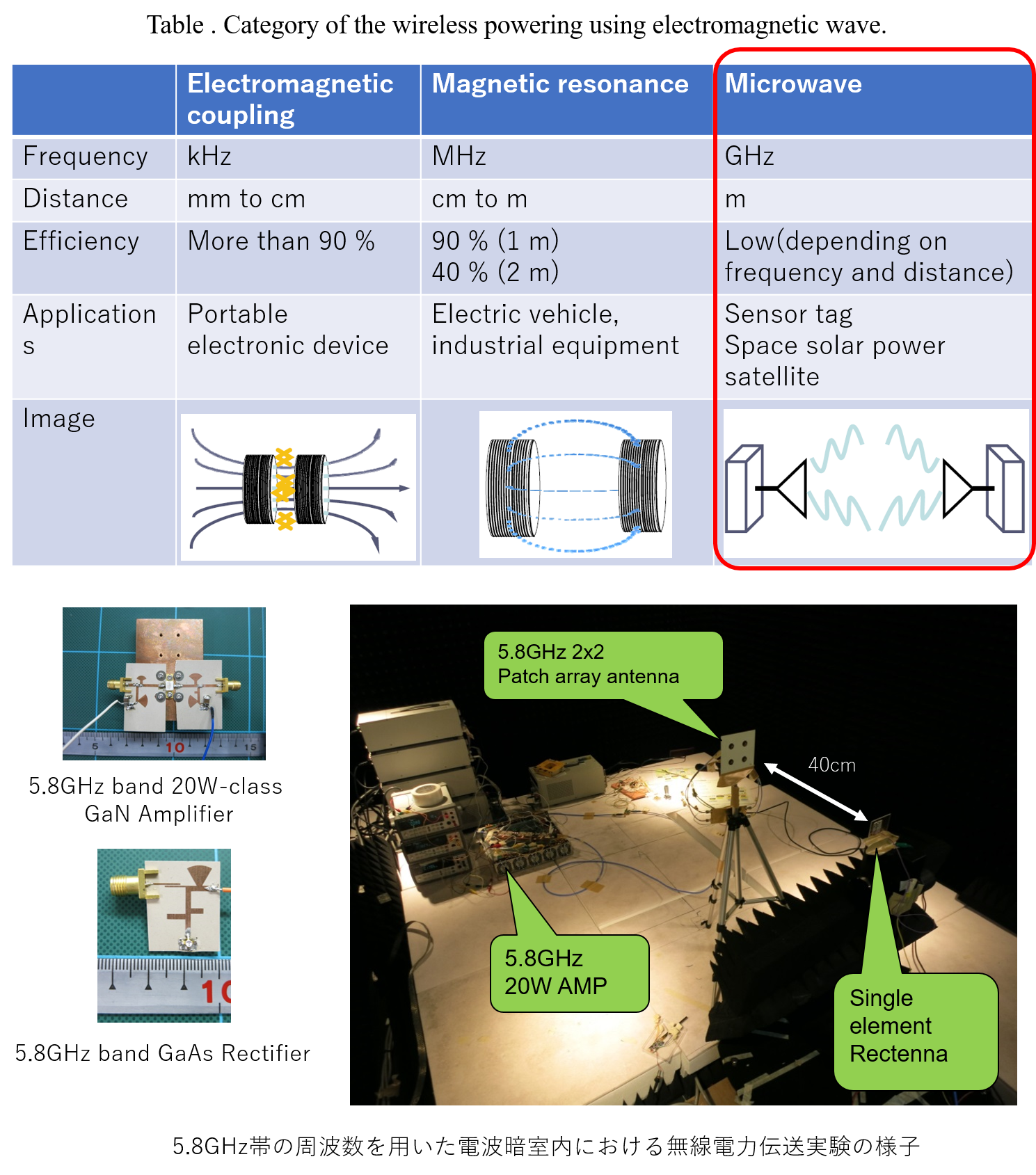Troublesome wired charge for smart phones
Smartphones, digital cameras, game machines, and the devices you normally use are equipped with wireless communication functions and recent performance improvements have helped them evolve to be more convenient. Since the advent of wireless communication, our devices have been released from troublesome electric wires, which are the main disadvantage of wired connections, and can be used anywhere. However, the power supply is from the built-in battery of the equipment, and when you use it, I think remaining battery power is a constant worry. Charging using a wired connection is essential when the battery becomes low. Some devices such as “Qi”, do not require wired connection but there is a need for the devices to be in contact with each other, and weak positional misalignment makes them inconvenient to use. Therefore, if we can realize ubiquitous power supply, which can be used anywhere, electric equipment such as smartphones can be fully wireless, and electricity supply can be possible without worrying about the remaining battery. Our research group is studying how to achieve both wireless communication for electronic equipment and wireless charging.

What is "wireless powering" for smart phones or electronic equipment?

The wireless charging technology is roughly categorized into three types as shown in Fig. 2. Among them, we are especially studying the radio wave type. Wireless charging using radio waves is being studied mainly in the field of solar power satellites in space, but we are studying a smaller system for electronic devices. From system design to circuit design of components used in the system, we pursuing research from a wide range of perspectives. In addition, although basic theory can be simulated using a PC, emphasis is placed on manufacturing in the engineering department. Not only design but also prototyping and measurement are carried out, so that the effectiveness of the proposed system can be verified. In Fig. 2, we conduct verification experiments of the entire system for compatibility between wireless communication systems and wireless charging systems. As a result of the experiment, we found that communication and power supply can coexist even when the distance between the devices is up to 1 m apart. Currently, we are advancing research to improve overall efficiency, to miniaturize, and to simplify equipment. Why don’t you join our search for the dream of wireless charging technology?


